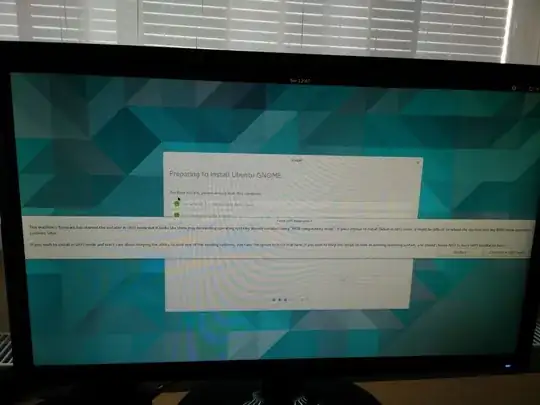It sounds like you've got a BIOS/CSM/legacy-mode installation of Windows, but the Ubuntu installer is booting in EFI/UEFI mode. Proceeding with an EFI-mode installation of Ubuntu would likely reach a certain point but then fail. Repairing it at that point would be possible, but only if you know more than you clearly do.
The simplest solution is probably to force your Ubuntu installation medium to boot in BIOS/CSM/legacy mode. This can usually be done by using the firmware's built-in boot manager, which is usually accessed by hitting Esc or some function key at boot time. In the boot manager, there are likely to be two entries for your boot medium, one of which includes the string "UEFI" and the other of which doesn't. Select the boot option that lacks the "UEFI" string. Alternatively, it may be possible to create an Ubuntu installation USB that lacks the EFI boot loader file, although the details of how to do this vary from one method of writing the USB drive to another.
Stepping back further, IMHO a better way to solve the problem is to re-install everything (both Windows and Ubuntu), but this time in EFI mode. Most modern computers are based on EFI firmware and provide a BIOS compatibility layer (aka a CSM or legacy support) to support older BIOS-mode boot loaders. This feature can usually be disabled in the firmware setup utility, which is desirable because it greatly simplifies the boot process. I describe this issue in more detail on this page, if you're interested in looking into it. Although the emphasis of that page is on the perils of installing Linux in BIOS mode when the computer already has an EFI-mode Windows installation, the principles are the same in your case, just with reversed boot modes for the two OSes. OTOH, disabling the CSM to simplify the boot process means that you'll have to either re-install Windows or jump through hoops to convert it to boot in EFI mode. If you try this and re-install Windows, your best bet is to completely erase the partition table on the disk before you begin the re-installation.
